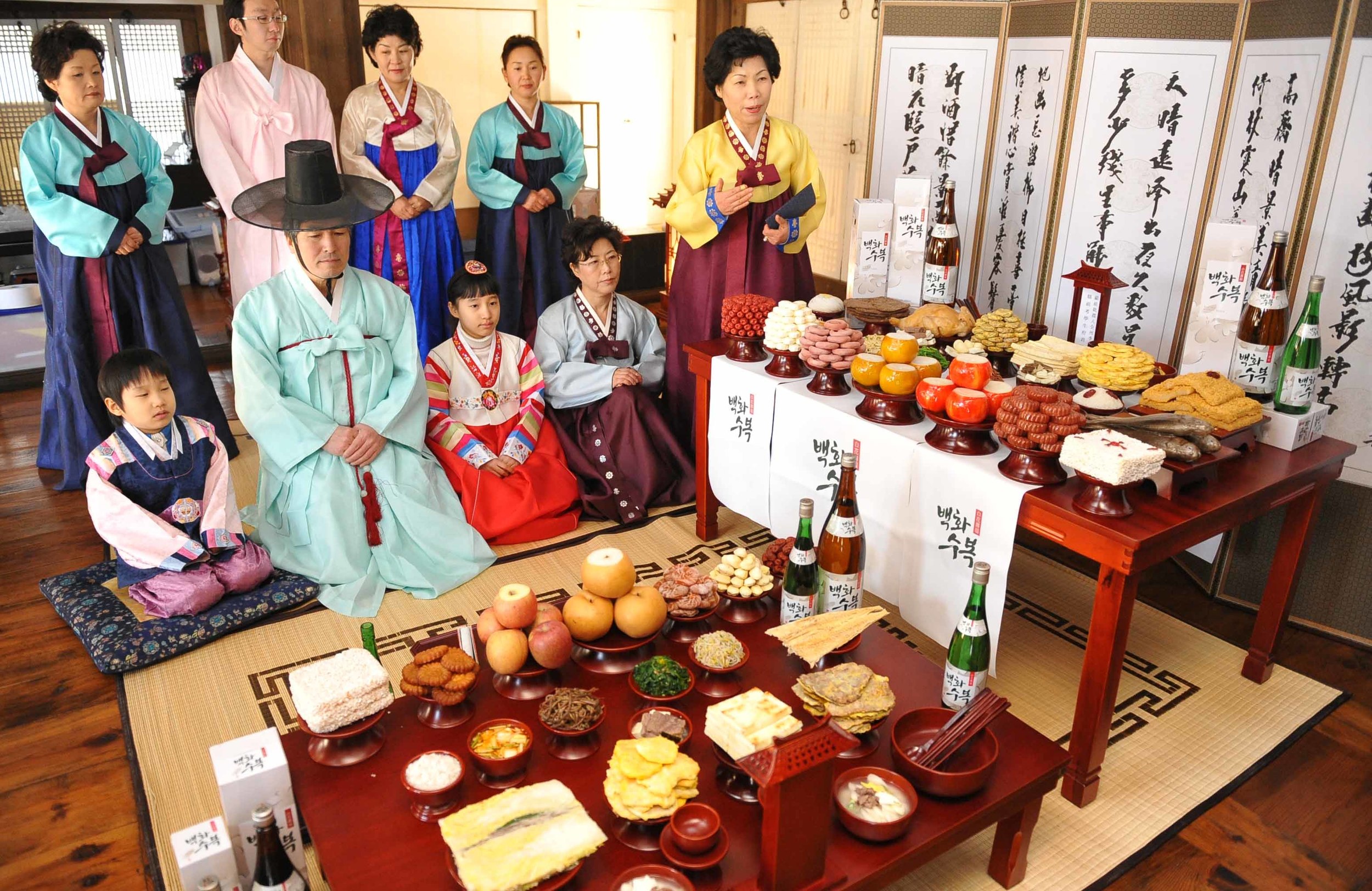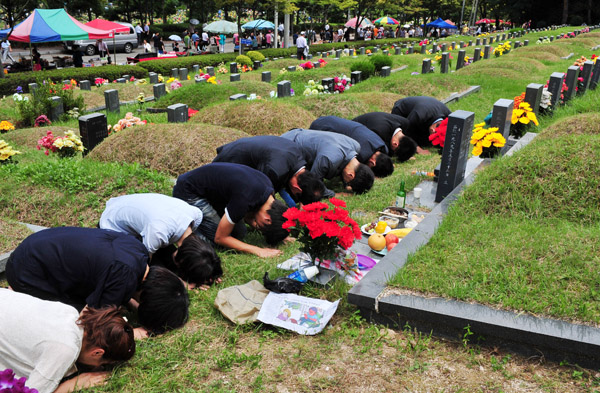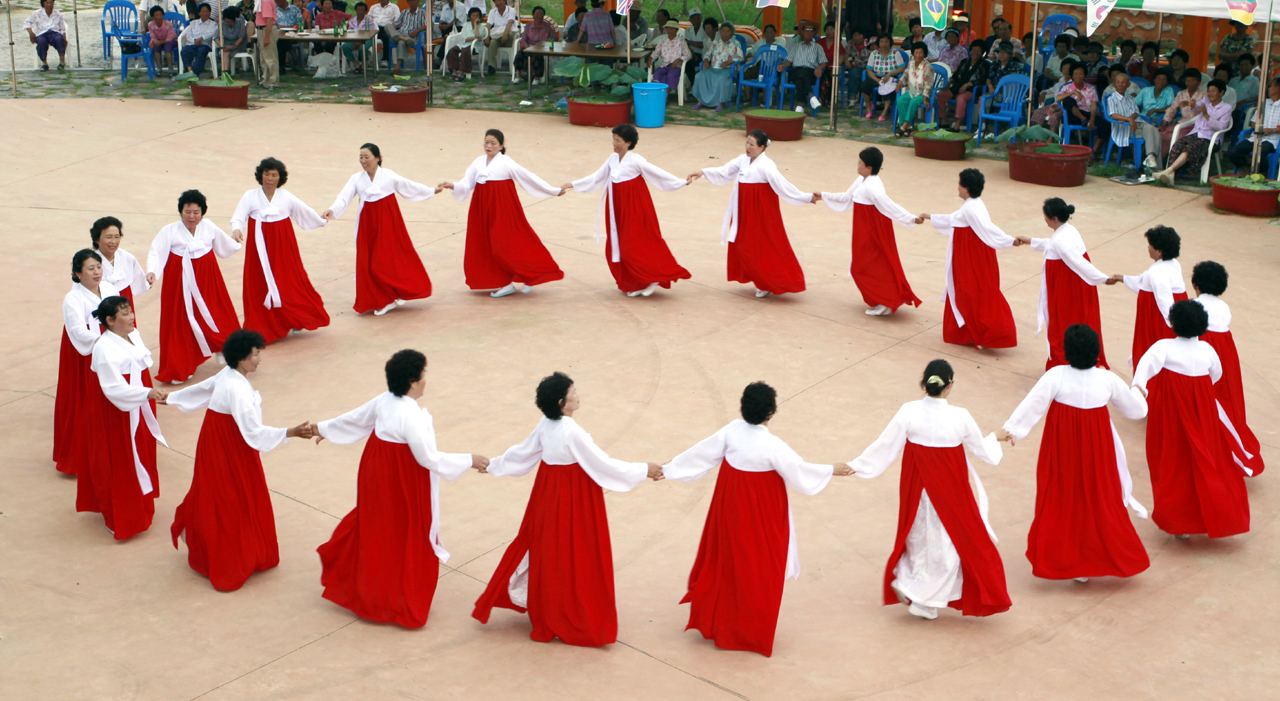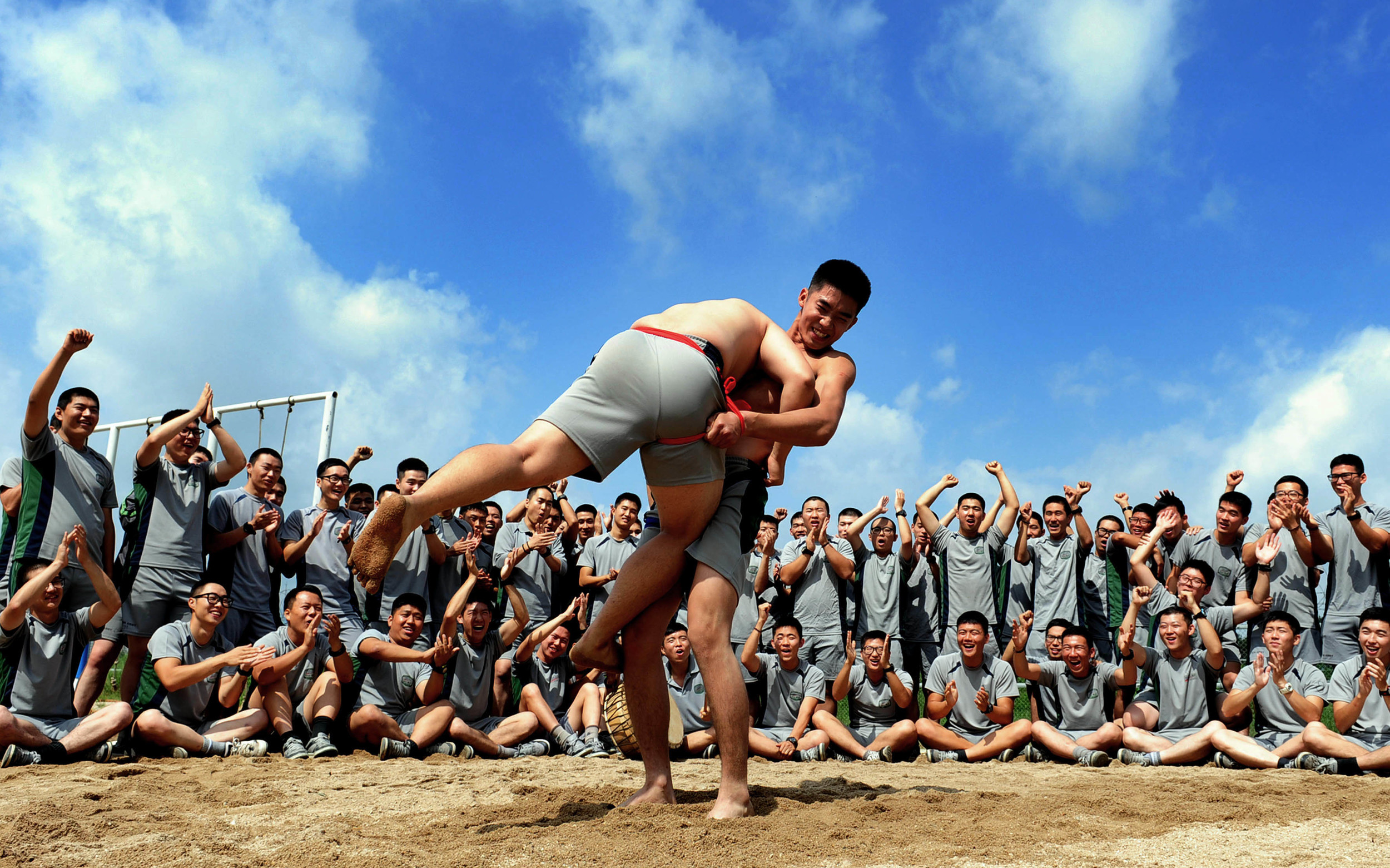It’s estimated that 75% of Koreans hit the road for their Chuseok celebration. Being one of the most important holidays, the population is given days off from work to visit their hometown. Because the highways get filled with traffic and come to a standstill, Koreans also:
- ride buses and trains, but book tickets over a month in advance.
- visit their hometown and elders (usually those on the father's side of the family) up to a month before the actual Chuseok.
- escape Korea and go on vacation elsewhere.
- stay put at home.
Other times, the elders (i.e.: your parents) may visit you instead, especially if you are a busy working professional. The one with more time and energy may visit the other.
Traffic during Chuseok, 1993. This scene could use some soju, Kpop music, and a disco ball! (Photo: Namu)
Traffic jam at its finest. (Photo: Enter6)
Traffic. Some things just don’t change. Perhaps only accentuated over time. Even the lines for trains and buses are no joke!
Lines for trains during Chuseok. (Photo: ConsumerTimes)
Traffic has become a huge part of Chuseok. However, let's focus on tradition and origin.
What is Chuseok about? Celebrated on the 15th day of the 8th month according to the lunar calendar, families gather to honor their ancestors upon a bountiful harvest. If no harvest, no ancestral worship. Three main activities occur in regards to paying respects:
- Charye (차례): various Korean foods are prepared and placed on a table, along with piles of fresh fruit. Arranged in a specific order, the food is offered to the ancestors, whose spirits are thought to protect the living.
- Beolcho (벌초): families visit their ancestral graves, pulling out weeds and trimming the grass.
- Seongmyo (성묘): at the grave site, family members take turns bowing to their ancestors.
As the population of Christians increase in Korea, these ancestral rites are less observed due to religious beliefs.
Charye. Family wearing hanbok, facing the wooden table of prepared foods. (Photo: Tagstory)
Beolcho. Family members tending their ancestor's grave. (Photo: Kyeonggi Ilbo)
Seongmyo. Taking a bow. (Credit: Kookje)
In celebration of an abundant harvest, food and entertainment are aplenty! The women in the household would gather and make songpyeon (송편), half-moon shaped rice cakes filled with sweet to semi-sweet ingredients. These days though, modern Koreans tend to buy them from the market. It saves a lot of time, money and energy! However it does make me sad that our tradition is gradually dying out. Perhaps one day we'll find ourselves with more resources for songpyeon-makery for it become common practice again.
Some of the prettiest songpyeon I've ever seen. Look at how they glisten under the light. (Photo: Igloos)
So much labor just to spell out "Chuseok" in Korean. There must be at least twelve dozen songpyeon in this photo! (Photo: Joins News)
Traditionally, women would hold hands and do the ganggangsullae (강강술래). They would dance in a big circle under the full moon.
Elderly ladies performing ganggangsullae under the sun. (Photo: Tistory)
Ganggangsullae. Young ladies for an indoor performance. (Photo: Weyesweb)
What do the men do? Ssireum. Korean wrestling. The sport had its heyday back in the Joseon Dynasty. The ultimate winner would receive an ox. In an agricultural community, that's one of the best prizes anyone can get! I would wrestle to win an year's supply of homemade kimchi.
Korean wrestling (Photo: Mnsoft)
More Korean dudes getting it on with ssireum. (Photo: ROK Armed Forces)
Korean girls being cuter than competitive during their wrestling match. Winner gets a fresh bowl of sweet bingsoo! (Photo: Saba)
Games vary with each region. Modern Koreans though tend to stay in their Western clothes and have the television running in the background as family members chitchat. Boys may hang out with their buddies at the PC bang. Girls may drag their parents to take them to karaoke. The level of celebration varies with each family. Some may stick to the traditions of Chuseok while others go on vacation.
Who cares what anyone else does? Let's go party it up! Historic sites and amusement parks in Seoul are likely to be open, so check their calendars to join in on any festivities.
Sources:
Chuseok: Korean Thanksgiving Day
Chuseok Holiday in Modern-Day Korea






















